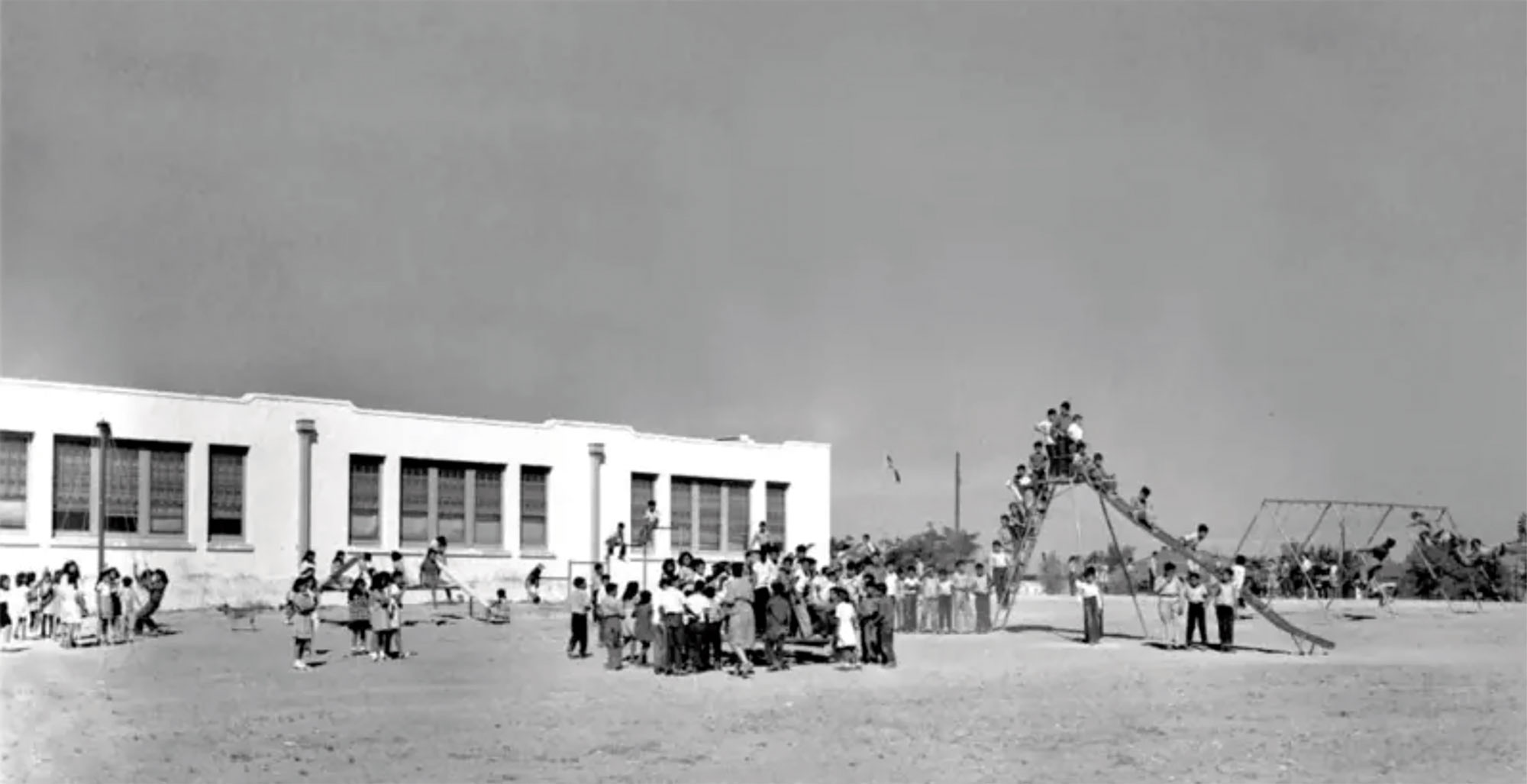

Marfa, 1954. At Blackwell Elementary School in this Texas desert village, children were forced to participate in a peculiar ceremony. The teachers distributed pieces of paper to them and asked them to write: “I will not speak Spanish, neither at school nor at rest.” They put all the pieces of paper into a box. Then all the students went out to the patio in the procession and put the box into a hole made by the American flag. The action was called “The burial of Mister Spanish”.
In 1954, the United States Supreme Court ruled that laws that established segregation in public schools were unconstitutional. But to implement this decision it took 11 years, in 1965 a new school was built in Marfa and the children of the segregated school Blackwell, of Mexican origin, began studying there with the rest of the children of the town.
Although the discrimination suffered by African-Americans at school was legally prescribed, it was not the same with students of Mexican origin, school districts decided what to do with Latino children. And in countries near the border -- California, Arizona, New Mexico or Texas -- most opted for segregation. In the 1940s, “Mexican schools” were opened, which only in the state of Texas were opened in 120 towns and cities.
They penalized those who tried to speak in Spanish, but in most cases it did not happen, because “assimilation” was more subtle and deeper. In restaurants, posters saying “Forbidden to dogs and Mexicans” were common, in schools the values of whites and middle class were introduced, with the excuse that children of Mexican origin had to correct the “linguistic disability”.
They penalized those who tried to speak in Spanish, but in most cases it did not happen, because the “assimilation” was more subtle and deeper.
Janie Martinez, who studied at the time at a segregated school in Texas, just told Texas-San Antonio University researchers her experience: “I didn’t want to speak Spanish, I didn’t want to dress like Mexicans.” When he graduated from school he asked him to write in the diploma “Janie” instead of “Juanita”. He later did not teach his children Spanish and today he is repentant.
Other Mexican parents did not suffer regret. Near the Mexican border they created the “escuelites”, financed in some way from their slim pocket. Teachers with training and experience were brought from Mexico for children to receive quality education in Spanish.
But this was not enough to mitigate the effects of segregation and assimilation. About 75% of those studied in Mexican schools know or knew Spanish and three generations later, 20% of their heirs do not know anything.